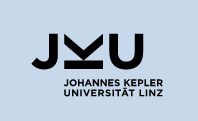
|

|
Supported by the Austrian Science Fund (FWF), Project P 35530 (2022–2026)
Quantitative extensions of equality characterize the approximation degree between objects. Fuzzy proximity and similarity relations are notable examples of such extensions. These and similar relations are used to model concepts such as vagueness, uncertainty, imprecision, imperfectness. Various approaches to formalizing quantitative information lead to the development of well-known logical, algebraic, and topological formalisms and structures such as e.g., fuzzy logic, rough logic, metric algebras, quantitative algebras, metric and proximity spaces, etc. Some modern applications of quantitative theories are related to artificial intelligence, image processing, probabilistic programming, program verification, natural language processing.
We address theoretical challenges and practical aspects of the development of advanced equational and generalization constraint solving methods in languages with quantitative extensions of equality. It involves developing the theoretical foundations, designing and analyzing the corresponding algorithms, studying their properties, and illustrating their application potential. The algorithms will be implemented and made freely accessible for the community to test, experiment, use, modify, and improve. Advancing the state-of-the-art in symbolic techniques for quantitative languages will open doors for approximate reasoning and computing methods towards new applications.